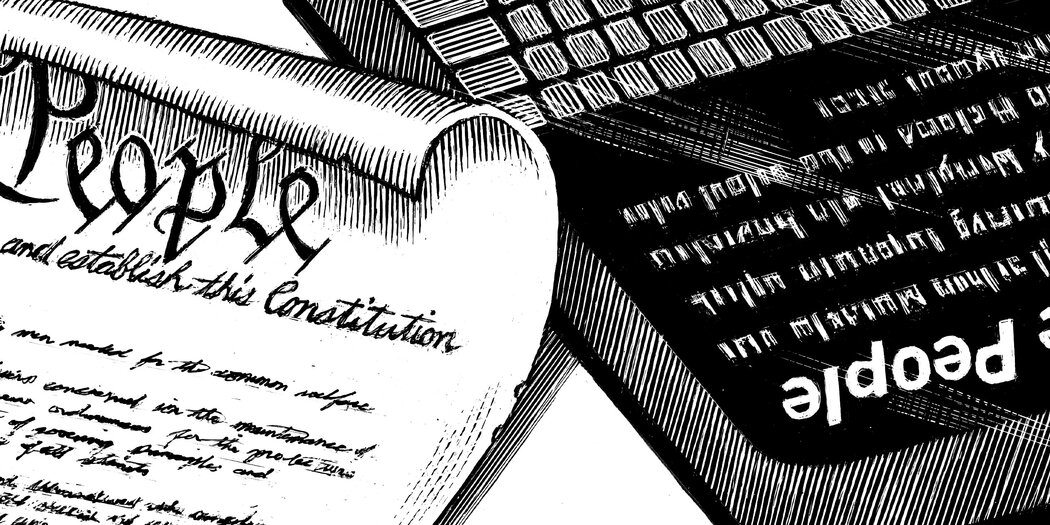Trump administration rewrites and scales back annual human rights report – BBC

Report on the Revision of the U.S. State Department’s Global Human Rights Assessment
Executive Summary
The United States government’s annual report on global human rights has undergone significant revisions, resulting in a downscaled document with a notable shift in focus. These alterations have profound implications for the monitoring and advancement of the United Nations Sustainable Development Goals (SDGs), particularly SDG 16 (Peace, Justice and Strong Institutions), SDG 5 (Gender Equality), and SDG 10 (Reduced Inequalities). The revised report diminishes scrutiny of certain U.S. allies while intensifying criticism of others, and eliminates entire sections pertaining to government corruption and the persecution of minority groups, thereby weakening its role as a tool for global accountability.
Analysis of Revisions and Implications for Sustainable Development Goals (SDGs)
Impact on SDG 16: Peace, Justice and Strong Institutions
The modifications to the report directly challenge the principles of SDG 16, which aims to promote just, peaceful, and inclusive societies.
- Undermining Accountability and Rule of Law (Target 16.3): The selective application of criticism, with reduced censure for allies like Israel and El Salvador, compromises the report’s function as an impartial mechanism for ensuring accountability and equal access to justice on a global scale.
- Disregard for Anti-Corruption Measures (Target 16.5): The reported elimination of sections on government corruption is in direct opposition to SDG Target 16.5, which calls for a substantial reduction in corruption and bribery. This omission signals a decreased emphasis on a critical barrier to sustainable development.
- Weakening of Institutional Transparency (Target 16.6): By altering the report’s content based on political alliances, its credibility as a product of an effective, accountable, and transparent institution is diminished. State Department officials cited a “restructuring” to “increase readability,” while critics, such as former official Uzra Zeya, described it as a “gutting” of respected work.
Setbacks for SDG 5 (Gender Equality) and SDG 10 (Reduced Inequalities)
The report’s revised scope represents a significant setback for goals related to equality and non-discrimination.
- Omission of Key Protections: Internal guidance reportedly advised the removal of references to gender-based crimes and the persecution of LGBTQ+ individuals.
- Contradiction of Global Targets: This editorial direction conflicts with SDG Target 5.1 (End all forms of discrimination against all women and girls) and Target 10.2 (Promote the social, economic and political inclusion of all). By removing these sections, the report fails to address critical human rights violations that perpetuate inequality.
Country-Specific Case Studies and SDG 16
The report’s treatment of specific nations highlights its deviation from a consistent application of human rights standards, impacting the promotion of justice and strong institutions (SDG 16).
- Israel, the West Bank, and Gaza: The report acknowledges a rise in human rights violations during the ongoing war but also credits the Israeli government with taking “credible steps to identify officials who committed human rights abuses.” It notably omits any mention of the International Criminal Court (ICC) arrest warrants for senior Israeli and Hamas leaders, a key development related to international justice and accountability (Target 16.3).
- El Salvador: The State Department concluded there were “no credible reports of significant human rights abuses,” a finding that starkly contrasts with assessments from organizations like Amnesty International concerning arbitrary detentions and inhumane conditions. This discrepancy raises questions about the commitment to impartial monitoring of justice systems.
- United Kingdom and Brazil: The report criticizes these nations for regulations on online hate speech, framing them as “serious restrictions on freedom of expression.” This stance creates friction with allied nations and complicates the global dialogue on balancing fundamental freedoms (Target 16.10) with the need to combat hate speech and disinformation.
Conclusion: Deviation from Global Human Rights and Development Frameworks
The revisions to the State Department’s human rights report indicate a departure from its traditional role as a comprehensive and impartial monitoring tool. The changes, including the selective application of scrutiny and the omission of critical topics like corruption and gender-based violence, undermine its alignment with the universal and integrated nature of the Sustainable Development Goals. This shift weakens a key instrument for promoting global accountability and risks signaling a “free pass” for human rights abuses, thereby impeding progress towards achieving peace, justice, and equality as envisioned in the 2030 Agenda for Sustainable Development.
Analysis of SDGs, Targets, and Indicators in the Article
1. Which SDGs are addressed or connected to the issues highlighted in the article?
-
SDG 16: Peace, Justice and Strong Institutions
This is the most relevant SDG as the entire article focuses on a US government report about global human rights abuses, the rule of law, fundamental freedoms, and government corruption. The article discusses the weakening of a key national institution (the US State Department’s human rights reporting) and its impact on holding governments accountable for abuses, which is central to SDG 16.
-
SDG 10: Reduced Inequalities
The article explicitly mentions that the revised report eliminates “entire sections… dramatically reducing coverage of issues including… persecution of LGBTQ+ individuals.” This directly connects to SDG 10, which aims to reduce inequalities and end discrimination against vulnerable groups, including on the basis of sexual orientation.
-
SDG 5: Gender Equality
The article notes that internal guidance advised staff to “remove some references to issues including… gender-based crimes.” The monitoring and reporting of such crimes are crucial for achieving SDG 5, which seeks to eliminate all forms of violence and discrimination against women and girls.
2. What specific targets under those SDGs can be identified based on the article’s content?
-
SDG 16: Peace, Justice and Strong Institutions
-
Target 16.10: Ensure public access to information and protect fundamental freedoms, in accordance with national legislation and international agreements.
The article is centered on this target. It discusses “serious restrictions on freedom of expression” in the UK, criticism of Brazil for “disproportionate action to undermine freedom of speech,” and the debate over online harm reduction laws in Europe being framed as “attacks on free speech.” The US report itself is a tool for public access to information on human rights, and its downscaling undermines this principle.
-
Target 16.5: Substantially reduce corruption and bribery in all their forms.
This target is directly implicated by the statement that the report was rewritten to “remove some references to issues including corruption.” This action reduces the international focus and pressure on governments to tackle corruption.
-
Target 16.3: Promote the rule of law at the national and international levels and ensure equal access to justice for all.
The article touches on this target by mentioning “arbitrary detentions and human rights violations” in El Salvador, “inconsistent” prosecution for abuses in the UK, and the omission of the International Criminal Court (ICC) arrest warrants for Israeli and Hamas leaders, which relates to international justice mechanisms.
-
Target 16.a: Strengthen relevant national institutions… to prevent violence and combat… crime.
The critique from a former official that the Trump administration is “gutting” the State Department’s work on human rights protections points to a weakening of a key national institution responsible for monitoring and promoting human rights globally.
-
Target 16.10: Ensure public access to information and protect fundamental freedoms, in accordance with national legislation and international agreements.
-
SDG 10: Reduced Inequalities
-
Target 10.3: Ensure equal opportunity and reduce inequalities of outcome, including by eliminating discriminatory laws, policies and practices.
The deliberate elimination of sections covering the “persecution of LGBTQ+ individuals” from the report signifies a failure to monitor and address discriminatory practices, which is a core component of this target.
-
Target 10.3: Ensure equal opportunity and reduce inequalities of outcome, including by eliminating discriminatory laws, policies and practices.
-
SDG 5: Gender Equality
-
Target 5.2: Eliminate all forms of violence against all women and girls in the public and private spheres.
The reported internal guidance to “remove some references to issues including… gender-based crimes” directly hinders the monitoring and international pressure needed to address violence against women, which is the focus of this target.
-
Target 5.2: Eliminate all forms of violence against all women and girls in the public and private spheres.
3. Are there any indicators mentioned or implied in the article that can be used to measure progress towards the identified targets?
-
For SDG 16
- Implied Indicator for Target 16.10: The number and nature of “credible reports of serious restrictions on freedom of expression.” The article cites this specific phrase from the report in relation to the UK.
- Implied Indicator for Target 16.3: The existence of “credible reports of significant human rights abuses,” such as “arbitrary detentions.” The article contrasts Amnesty International’s findings with the US report’s conclusion of “no credible reports” in El Salvador, showing how this data point is used as a measure.
- Implied Indicator for Target 16.3: Consistency of prosecution and punishment for human rights abuses. The report is quoted as describing this as “inconsistent” in the UK, suggesting it is a metric for evaluating the rule of law.
- Implied Indicator for Target 16.5: The scope and depth of reporting on government corruption in official documents. The article implies this indicator by highlighting that the report “dramatically reduc[ed] coverage of issues including government corruption.”
-
For SDG 10
- Implied Indicator for Target 10.3: The inclusion or exclusion of data on the “persecution of LGBTQ+ individuals” in human rights reports. The article points to the elimination of these sections as a significant change, making their presence or absence an indicator of commitment to monitoring inequality.
-
For SDG 5
- Implied Indicator for Target 5.2: The inclusion or exclusion of data on “gender-based crimes” in human rights reports. The article’s mention of guidance to remove these references implies that their inclusion is a standard measure of progress.
4. Summary Table of SDGs, Targets, and Indicators
| SDGs | Targets | Indicators (Implied from Article) |
|---|---|---|
| SDG 16: Peace, Justice and Strong Institutions |
16.10: Protect fundamental freedoms.
16.5: Reduce corruption. 16.3: Promote the rule of law and access to justice. 16.a: Strengthen national institutions. |
Number of “credible reports of serious restrictions on freedom of expression.”
Scope of coverage of “government corruption” in official reports. Number of “credible reports of… arbitrary detentions” and consistency of prosecution for abuses. Level of institutional capacity and integrity of human rights reporting bodies (e.g., the “gutting” of the State Department’s work). |
| SDG 10: Reduced Inequalities | 10.3: Ensure equal opportunity and eliminate discrimination. | Inclusion/exclusion of data on the “persecution of LGBTQ+ individuals” in human rights reports. |
| SDG 5: Gender Equality | 5.2: Eliminate all forms of violence against women and girls. | Inclusion/exclusion of references to “gender-based crimes” in official reports. |
Source: bbc.com

What is Your Reaction?
 Like
0
Like
0
 Dislike
0
Dislike
0
 Love
0
Love
0
 Funny
0
Funny
0
 Angry
0
Angry
0
 Sad
0
Sad
0
 Wow
0
Wow
0










/campaigns/16-days-of-activism-against-gender-based-violence/pr-web-banner.tmb-1200v.jpg?sfvrsn=8cc7b98e_1#)



































































